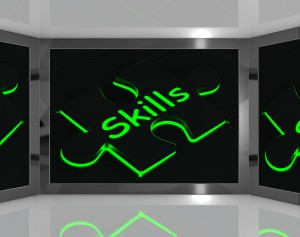What is an Audio Visual Designer? Why Do You Need To Hire One?
Our loyal readers and customers may remember that I joined Audio Visual Bend several months ago to coordinate the team’s social media efforts. Since I have a background in higher education and corporate training, I am very familiar with the many uses and applications of audio visual equipment. However, I am still learning how to properly use AV industry terminology and how to best communicate the many uses of AV technology to AV Bend’s customers.
This week, I am diving into the phrase, “Audio Visual Design.” Audio Visual Bend offers design services including Acoustics, Audio-Visual Systems, Security and CC/TV Systems, Access Control Systems, and Project Management. So, the question I am asking myself to answer is this: what are each of these offerings and why do you need them?
I’ll begin with the term Audio Visual Design. When I googled the term, the top suggested post connected me to Wikipedia, which stated:
Audiovisual (AV) means possessing both a sound and a visual component, such as slide-tape presentations, films, television programs, church services and live theater productions.
Business presentations are also often audiovisual. In a typical presentation, the presenter provides the audio by speaking, and supplements it with a series of images projected onto a screen, either from a slide projector, or from a computer connected to a projector using presentation software.
Audiovisual service providers frequently offer web streaming, video conferencing and live broadcast services.
Computer-based audiovisual equipment is often used in education, with many schools and universities installing projection equipment and using interactive whiteboard technology.
Another audiovisual expression is the visual presentation of sound (visual music).
I thought that was a pretty good definition of audiovisual, but I did not feel it addressed the “design” aspect I was looking for.
So, the second post listed on Google connected me with a job description of an Audiovisual Design Engineer. Here it is:
Audiovisual design engineers are responsible for the development, implementation, and installation of audiovisual systems. Some of these systems are on small scales such as music studios, while others are on large scales such as concert arenas, and each requires timely and precise installation by experienced audiovisual engineers. They are also responsible for all design aspects of the job, including layout and various audio/visual specifications.
Punctuality and precision are very important in this position, so time-management skills are highly beneficial. Audiovisual engineers are also responsible for researching and implementing new software, as well as technological developments to improve various aspects of the job. They typically work in conjunction with other staff members, so strong verbal and written communication skills are also important.
I found that pretty impressive! And this description also gave me (and hopefully you!) further understanding of the design aspects within this industry. The site continued with a list of Audiovisual Design Engineer Tasks including:
• Manage audiovisual projects from planning stages to completion.
• Install, configure, and deliver audiovisual projects as contracted.
• Provide recommendations to management regarding solutions to potential project risks and issues.
• Test and troubleshoot audiovisual systems to ensure they work before job completion.
• Establish project schedules and deadlines to ensure they are realistic and attainable.
Again, impressive! I hope this research has been as helpful for you as it was for me. I definitely feel better equipped to share the benefits of hiring an Audio Visual Designer from the AV Bend team. And now you are better equipped to determine whether or not you need one too. If you do, call us quick.
In future blog posts, I will share my research on the various terms and offerings I listed above. Stay tuned.
Learning the ropes,
Lauren

Social Media Coordinator

